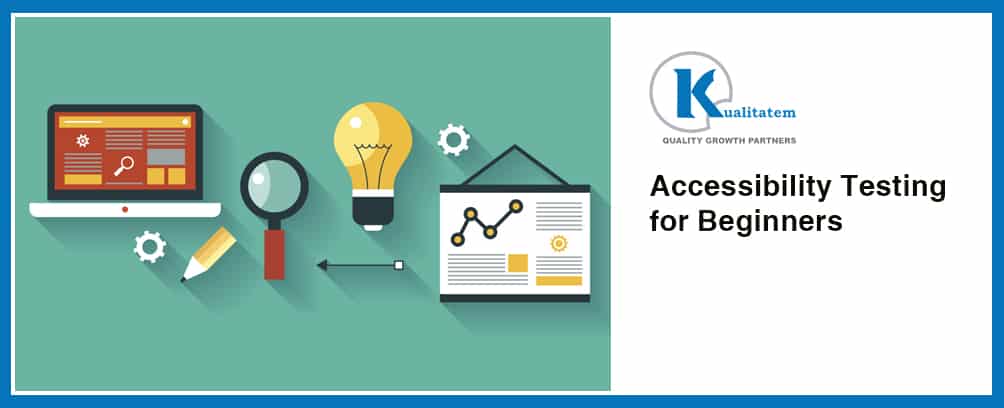Accessibility Testing For Beginners

- January 28, 2015
- admin
Accessibility testing is a technique of making sure that how useful the product is for people with disabilities. It is a type of system testing designed to determine whether individual person will be able to use system either it is software, hardware or any other type of system. Disable persons have many problems such as physical problems, learning disabilities as well as difficulties with sight, hearing and movement.
For making accessibility testing a success the team should plan a separate cycle, and make sure that this team has all information about what they are testing and all available tools for accessibility testing. Below are some examples of test cases for accessibility testing:
- Verify that all functions are available via keyboard only (don’t use mouse)
- Verify that when display setting is changed in High or Low Contrast modes, all information should be visible.
- Verify that all images have corresponding alternate text associated with it.
- Verify that all available text should be readable when user uses screen reading tools.
Requirements of Accessibility Testing
Before starting Accessibility testing; team should have understanding about the project, its environment, resource and intended audience. Third parties like governments and clients should also be able to set some requirements.
- Governments: Government requirement such as Section 508 is a piece of US federal legislation, which mandates that websites produced for federal agencies must conform to at least a specific set of defined requirements. WAI’s Policies Relating to Web Accessibility page provides a partial list of similar legislation.
- Customer policies: For example, customer requirements are that the website conforms to the “Triple A” conformance level of WCAG 1.0.
- Marketing utility: checking the compliance with a particular standard, such as Section 508, might help sell a project to clients who are concerned about accessibility.
- Internal Accessibility Policies at your Organization: Check that projects produced by the BBC need to comply with the BBC’s Accessibility Guidelines v1.3.
Standards of Accessibility Testing’s (http://www.w3.org/wiki/Accessibility_testing)
There are some accessibility standards that have more than one possible level or type of conformance.
- WCAG 1.0
They have three conformance levels:
- People with some disabilities “will find it impossible to access information” in a document that does not pass level “A”.
- People with some disabilities “will find it difficult to access information” in a document that does not pass level “Double-A”.
- People with some disabilities “will find it somewhat difficult to access information” in a document that does not pass level “Triple-A”.
- WCAG 2.0
WCAG 2.0 uses the same three levels of conformance as WCAG 1.0, but has redefined them. The WCAG working group maintains an extensive list of web accessibility techniques and common failure cases for WCAG 2.0
Tools for Accessibility Testing
There are various tools available in the market to check for accessibility of websites and web applications. The most commonly used tools are:
- Functional Accessibility Evaluator: it gives you a report of everything which is needful for you from your site in a color coded result page with very nice and beautiful overview.
- WAVE: Wave application is produced by Web AIM, this application helps in making sure that the sites are accessible in many languages. This is a simple application and you can enter URL, upload any file and see all the elements identified.
- Truwex Online 2.0: This tool checks the accessibility options such as section 508, Privacy, WCAG levels, and so on. This is also very simple tool and you can enter URL, check all the boxes you want checked and then it will generate reports.
Although tools can serve as an aid in accessibility testing; we recommend that a greater part should be covered by manual testing to ensure real coverage.











